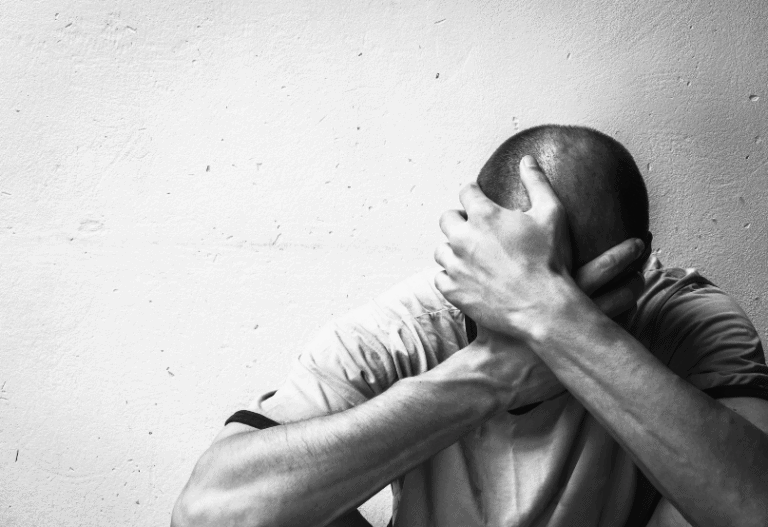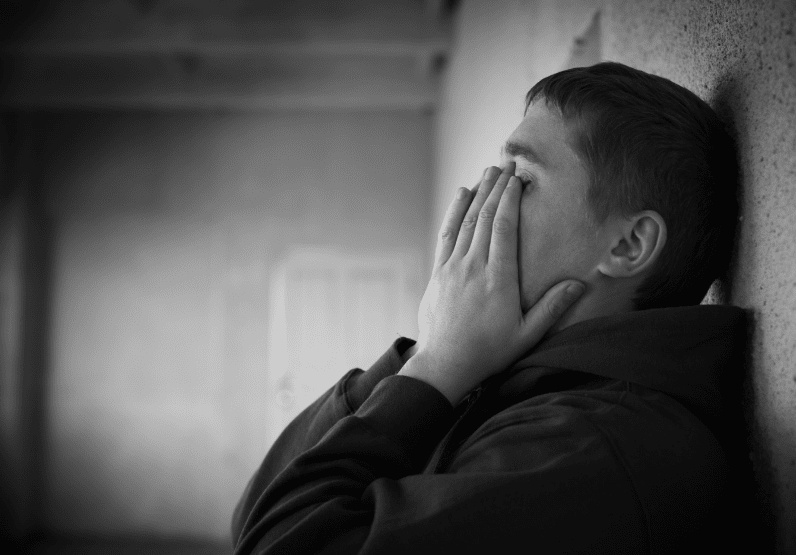Pete Davidson: His Struggle with Drugs and Mental Health Disorders
Pete Davidson is known for his time as a comedian on Saturday Night Live (SNL). He has also acted in a number of films. Pete has gained increased media attention in recent times for becoming romantically involved with Kim Kardashian. In response, Kim K’s long-time partner Kanye West, now officially known as Ye, has made retaliatory posts on social media about Pete, Kim, and their relationship.
Kim Kardashian has an interesting choice in partners. Kanye West is known to have mental health issues, Most notably, bipolar disorder. Pete Davidson is known for having a borderline personality disorder (BPD) diagnosis. Kim K has been an ally to Kanye in the past, defending his behavior when he has acted out and calling attention to the importance of mental health awareness.

An important factor to be aware of when it comes to BPD is the way this disease can be insidious. In some instances, individuals with BPD are able to put on a public mask that indicates they are doing well, in terms of having their mental health under control, and they may be able to successfully convince the world that they are upbeat, positive, and healthy. It’s also true that they may go home and be a complete disaster behind closed doors. BPD is a spectrum disorder and characteristics of the disorder vary in prominence and severity from person to person.
Dialectical behavior therapy (DBT) is known to be one of the most effective treatment methods for BPD. In more recent years, mental health practitioners have realized the benefits of DBT have utility value for clients who do not have BPD. Keeping this in mind, those with BPD often require regular therapy appointments and careful monitoring to ensure that they remain on the right track and are not at risk of causing harm to themselves or others.
Pete Davidson’s Borderline Personality Disorder Diagnosis
Pete Davidson first revealed his borderline personality disorder (BPD) diagnosis during an interview with Marc Maron. Since then, Pete has made statements from time to time about what it is like living with BPD.
Fear of abandonment is one of the nine classic markers of BPD. Those with BPD often go to excruciating pains and lengths and may be intentionally or unintentionally devious and manipulative, to attain their desires.
Pete’s father was a New York firefighter who was killed in the 9/11 attacks when Pete was only 7 years old. Intense childhood trauma is often a reason why people go on to develop a personality disorder. Pete has expressed in therapy that losing his father at such a young age has resulted in his fear of abandonment.
Trust issues are extremely common in those with BPD. In 2017, when Pete spoke with Marc Maron he stated, “My big thing is trust. One day [my dad] was here, and the next day he’s gone. I would have trouble sometimes when my mom would say, ‘I’m going out.’ When people say they’re leaving and coming back, I get a really big fear, like that they’re not gonna come back.”
Pete has expressed having co-occurring issues with depression. Severe depression and related symptoms and diagnoses are common for those with BPD. A major difference between a personality disorder and a mood spectrum disorder is that those who struggle with a personality disorder have persistent and consistent long-term issues surrounding patterns of behaviors. Mood disorders, like bipolar disorder, tend to come in episodes. With a personality disorder, it can be more complicated to determine which parts of a person’s activities, beliefs, and statements are their own and which are the result of their disorder.
Dialectical behavior therapy (DBT) was created by BPD expert Dr. Marsha Linehan. DBT is considered the gold standard for BPD treatment.
This form of therapy focuses on teaching real-world skills that can be applied to daily life using. Common areas of focus include:
- Mindfulness
- Emotional regulation
- Distress tolerance
- Interpersonal relations.
Pete has expressed difficulty putting DBT skills into practice. He did say that he has found some of the techniques useful when he has been able to get himself to turn to them in times of crisis.
Uncontrollable anger, sometimes referred to as “borderline rage”, is a common red flag that someone may be struggling with BPD. There are theories that borderline is much more commonly diagnosed in women than men because the majority of men with the disorder may be in jail or prison as a result of committing violent acts. Women with borderline are known to act violently. Keeping that in mind, women with BPD are often more likely to self-harm and turn violence and feelings of self-loathing inward as opposed to taking out their aggression on others. As with all disorders, this very much varies from person to person.
Pete Davidson has described has what he described as “rage blackouts” which he initially attributed to marijuana use. He has been quoted stating, “I started having these mental breakdowns, where I would like freak out. Rage. And then not remember what happened after. … Later on, I would remember it in pictures … like kind of remember it like in a fog. I wouldn’t know what happened until after I broke something or after I ‘came to.’ I was under the assumption that maybe it was the weed. I never really did any other drugs. [So I thought] I’m going to try to go to rehab for weed, maybe that’ll be helpful.”

In speaking about the troubling habit of those with BPD using manipulation, Pete has shared, “I think the manipulation thing I definitely had, where I would try to make someone feel a certain type of way. And then if they felt that way I would feel good, and then if they didn’t feel that way, I would think something’s wrong and that they’re mad at me. So with words, I would try to sway people into saying the exact thing I needed to hear. I’m like, ‘You hate me, don’t you?’” It’s always like, whatever question I ask, I’m expecting the opposite answer. … That could be pretty fucking frustrating for the other person.”
The use of manipulation by those with BPD can be extremely destructive in the lives of loved ones and make it difficult to maintain friendships. All or nothing thinking, black and white thinking, and making threats about what you may or may not do if a person does not do what you say is extremely difficult to manage.
Pete once expressed on Instagram, while in a relationship with Ariana Grande, his frustration with people making claims that a person with BPD cannot be in a positive relationship or that they get labeled as “toxic”. Pete’s comments on social media include mentioning that he was actively involved in treatment. This is one of the most important ways in which a person with BPD can find hope in creating a better future for themselves and their loved ones. Without regular therapeutic check-ins, proper medication regimens, and accepting interventions when needed, it’s very easy for the life of a person with BPD to go off the rails and create havoc in their lives and the lives of others.
Extremely high suicidality is correlated with BPD. In 2018, Pete made a post on social media expressing his ongoing struggle with suicidal ideation. He wrote, “I really don’t want to be on this earth anymore. I’m doing my best to stay here for you but I actually don’t know how much longer I can last. all I’ve ever tried to do was help people. just remember I told you so <3”. This is a sad and very honest statement from a person who has BPD. They are fighting an uphill battle on a day-to-day basis. Years spent living one day at a time take a massive toll on a person.
If you or someone you care about is struggling with thoughts of suicide, it’s important that you reach out for assistance as soon as possible. National Suicide Prevention Lifeline at 1-800-273-8255 or reach the Crisis Text Line by texting “START” to 741741. Support is available 24/7 and no one should be embarrassed or ashamed to admit they are struggling. Remember, it’s ok not to be ok.
With appropriate therapy, a good therapist, and a commitment to hard work, it is possible to get symptoms of BPD under control. Recovery is an ongoing process.
9 Red Flags for Borderline Personality Disorder
1. Fear of abandonment
An intense fear of abandonment, even going to extreme measures to avoid real or imagined separation or rejection.
2. Splitting
This is a layperson term for the Jekyll-Hyde feeling of being two different people. It’s a sense that there is a version of someone you know is the person you know and love and then their evil twin who is negative, hateful, angry, and potentially dangerous.
Black and white thinking is a common trait associated with this behavior. A person quickly goes from thinking someone is amazing or the best person ever to saying that they hate that person and never want to speak to them again.
3. Unstable Self Image
Having an unstable sense of self highlights the concept of a personality disorder. An unstable foundation, in this sense, can make a person’s life tumultuous. Mood shifting, changes in strongly held personal opinions, values, and goals, can create a relationship dynamic that confuses and frustrates loved ones. For the person with BPD, there can be a constant wonder about your identity or what your selfhood is at a core level.
4. Impulsivity
Acts of impulsivity can go in many directions. This can include impulsive behaviors and risky choices involving sex and drug abuse. It can result in self-sabotage. Someone with BPD may suddenly decide that a job they have is no longer good or possible to maintain and the same goes for a positive or healthy relationship. There is a sense that everything is going right…until it isn’t.
5.Self-Harm and Suicidality
People with BPD have high rates of self-harm, suicidality, suicide attempts, and, tragically, success at taking their own lives. For these reasons and more, it’s important that a person with BPD Is under regular medical supervision to ensure that they stay on their treatment plan. Frequent wellness checks are a good idea to make sure that a person is engaging in self-care and managing to maintain a sense of control over themselves, their choices, and their life without everything feeling like it’s spinning out of control.
6. Rapid changes in emotional states
A person with BPD may change rapidly from being in a state of exuberance to intense and uncontrollable crying. Or from a state of happiness and satisfaction to extreme anger and rage. Angry outbursts are common and shame and guilt after making poor decisions or acting badly can create a cycle of regret that fuels symptoms of depression.

7. Chronic feelings of emptiness
This is a characteristic of borderline personality disorder that is specific to BPD and a true sign that a person may suffer from this disorder. In spite of all the positive and goodness happening in a person’s life, deep down a person with BPD may feel an overwhelming sense of emptiness. Living with this sense of chronic emptiness takes a toll and is one of the reasons why poor self-esteem, poor self-image, poor self-worth, and high rates of suicidality are common for those with BPD.
8. Extreme and Uncontrollable Anger
Uncontrollable anger, often referred to as “borderline rage”, is a frightening symptom that is common for those with BPD. A person with BPD may have angry outbursts that seem to come almost out of nowhere. This is in part because of black and white thinking. Without treatment, those with borderline may feel every small issue as a big, end of the world, kind of issue. As a result, the response to a small issue may result in an outburst that you might only expect to see in response to a very serious or extreme issue. This is something that a person with BPD can help learn to control with DBT skills in therapy.
9. Pyromania
Another trait that is not uncommon for those who suffer from BPD is pyromania. While this is a marker that can be used to determine if someone falls under the category of a BPD diagnosis, there are many individuals who are borderline who have never felt the urge to start fires.
It’s important to note that a person can have BPD without having all of the common signs associated with this diagnosis. Even identifying heavily with a few of these red flags could indicate a person has what is sometimes referred to as “quiet borderline” indicating that they may fall on the milder side of the BPD spectrum.
If you or a loved one is struggling with a mental disorder, the specialists at Oasis Recovery can help. Contact us today to speak with an admissions specialist and get the help you need today.







